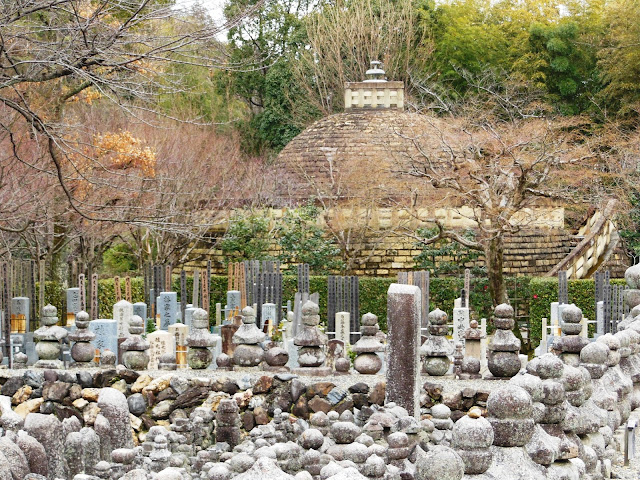We did make one final stop in Kyoto at Fushimi Inari Shrine. The shrine was built in honor of Inari, the Japanese fox goddess, (it's said that the fox spirits are able to posses people by slipping in through their fingernails). The path leading to the hilltop is lined with hundreds of red torii, (shinto gates). I removed all of my finger nails before we entered the shrine so I remain unpossessed.
Onward to Nara. Our first stop was Todai-ji. The main attraction at Todai is Diabutsu, the largest Buddha statue in Japan and one of the largest in the world. Diabutsu spends all of his time inside of Daibutsu-den, the largest wooden building in the world.
Just outside of of the Diabutsu-den sits Yakushi Nyorai, Buddha of medicine and healing. You're encouraged to touch the statue and then touch that same part of your own body in order to heal your ailments. I'm in perfect working order though, so I skipped this part.
Nara is also home to a large number of "wild" deer. By home I really mean it was like having a petting zoo follow you around everywhere. These animals looked gross and mangy and they smelled horrible. This didn't stop people from petting them, feeding them, playing with them, taking pictures with them, etc. I was horrified because back home in the great state of Pennsylvania it's pretty common knowledge that deer are full of parasites, (like ticks that carry lyme disease), and I'd never think about letting one hang out next to my ice cream stand:
Anyway, except for mutant rat-deer, Nara was well worth the day trip from Kyoto. We spent the rest of our day walking through Nara Park and stumbling into a few other temples, shrines, and gardens.
Our vacation had now reached it's halfway point. Caroline wasn't ready to leave Kyoto, so she ran away and tried to hide.





















































